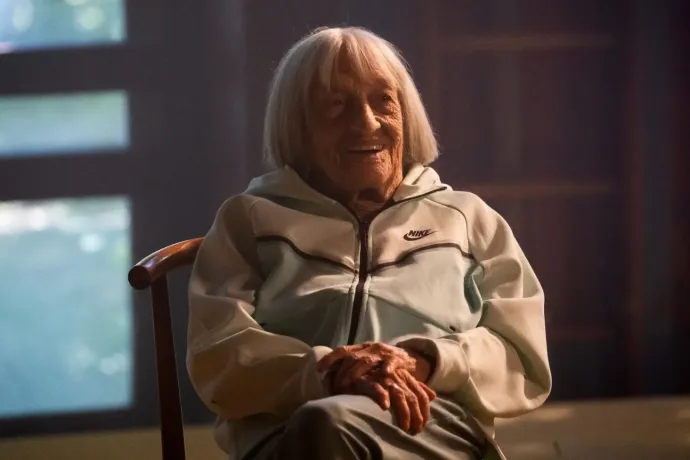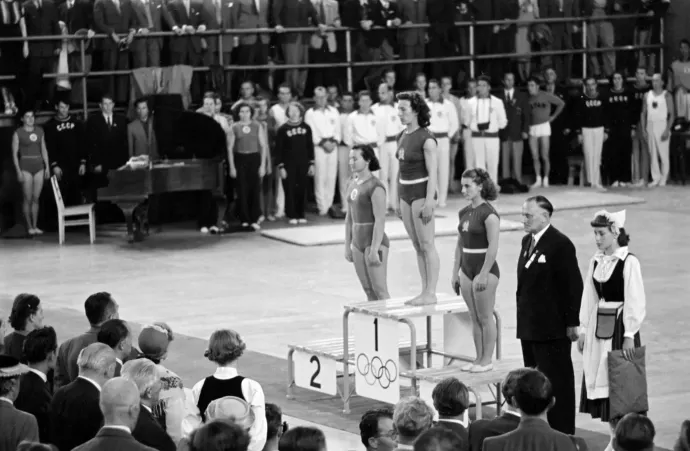Ágnes Keleti, the most successful Hungarian gymnast and Olympic champion of all time has died

Five-time Olympic champion gymnast Ágnes Keleti, the most successful Hungarian gymnast of all time, died at the age of one hundred and three on Thursday morning, MTI reported.
Ágnes Keleti was born on 9 January 1921 as Ágnes Klein into a family of Jewish origin in Budapest. As a young girl, she tried several sports, including swimming and rowing, but she was most interested in music at the time. She wanted to become a cellist, but the Second World War dashed her plans as she had to sell her instrument.
"Gymnastics just found me, without any particular dedication on my part. In the beginning it caused a lot of inconvenience, because even though I moved gracefully and beautifully, I was not selected for the national team in 1940, as due to the laws of the time, Jews were not allowed to be on the national team. But I was regarded as talented, and was told I had a great future, so I couldn't give up. Then the German occupation came and survival became more important than anything else," Keleti told Index in 2005.
Surviving the Holocaust under a fake identity
Keleti first started her gymnastics training at the National Gymnastics Association (NTE – Nemzeti Torna Egylet). She became a member of the national team in 1938 and won her first national championship medals in December 1940. She also won the gymnastics championships in Budapest that spring, but the World War interrupted her promising career. She survived the Holocaust under a fake identity, having bought the papers of a Piroska Juhász and became the assistant to a furrier named Varga. The Varga family knew of her background but did not give her away, and helped her to survive the war. Her mother and sister were rescued by the Swedish diplomat Raoul Wallenberg, but her father, a factory owner, and several relatives were killed in Auschwitz.
She stayed in Hungary even after the World War ended, hauling coal and furniture for a living in the devastated capital. After the liberation, the Hungarian gymnastics team was first reassembled in the autumn of 1945, and Keleti was chosen to be on it, along with Erzsébet Köteles, Anna Fehér, Gizella Horváth and Adrienne Vörös. In 1947, the head of the Postás SE gymnastics division, Olympic bronze medallist Margit Csillik called her the best Hungarian gymnast. "Keleti Ágnes is the best gymnast today. She is number one on all the apparatus and on the floor. Indeed, she is very close to perfection," Csillik told Képes Sport at the time.
She qualified for the first Olympics of her life in 1948 at the age of 27, but was unable to perform at the London Games due to an injury. Prior to the competition, the Hungarian national team could only train in a room without a proper mat, and the ligament in Keleti's ankle was torn after a somersault. The Hungarian national team won the silver medal in the team competition without her, losing by less than five points to the winner Czechoslovakia.
Ten medals at two Olympics
The 1952 Helsinki Olympics were the pinnacle for Hungarian sport, with Ágnes Keleti winning one of the 16 gold medals. This was the first Olympics to feature a women's artistic individual all-around event. Keleti was the best on floor, 16 hundredths of a point ahead of her great rival, the Soviet Mariya Gorokhovskaya. She also won a silver in the team competition and a bronze medal on both the uneven parallel bars and in the portable apparatus events.

Before the next Olympics, she won another World Championship gold medal, coming out on top on the uneven bars at the 1954 World Championships in Rome. The 1956 Melbourne Olympics were a turning point in her life in many ways.
With four gold medals and two silvers, she was the most successful Hungarian athlete at the games. She won on the uneven bars, the beam, on the floor (tied with Larisa Latinyna) and as part of the team in the portable apparatus competition as well. She finished second in the individual all-around and also as part of the team as they came in second in the team competition.
Ágnes Keleti won a total of ten medals at these two Olympics, making her the most successful Hungarian female athlete of all time. Apart from her, only fencer Aladár Gerevich won ten Olympic medals.
A new life in Israel
After the 1956 Hungarian revolution, she decided she didn’t want to live in Hungary any longer, and once the Games in Melbourne ended, she stayed in Australia with her sister, who had emigrated to Australia ten years before. She started working at a radio assembly plant in Sydney, but soon realised that Australia would not be her new home. By way of Munich, she settled in Israel in the summer of 1957, where she took up a post as a department head at the College of Physical Education.
She played a major role in establishing the sport of gymnastics in Israel, heading the national gymnastics team for twenty-two years. Many of her students became national champions. After the fall of communism she started visiting Hungary more and more often and eventually moved to Budapest. She has two sons from her second marriage.
She received several awards for her outstanding sporting achievements: in 1954 she was awarded the title of the Most Outstanding Sportswoman of the Hungarian People's Republic, in 1981 she was elected a member of the Jewish Sports Hall of Fame, in 2004 she was elected the Sportswoman of the Hungarian Nation, and in 2019, after the death of Finland's Lydia Wideman, she became the oldest living Olympic champion.
Our previous portrait of the remarkable life of the most successful Hungarian gymnast of all time may be found here.
For more quick, accurate and impartial news from and about Hungary, subscribe to the Telex English newsletter!